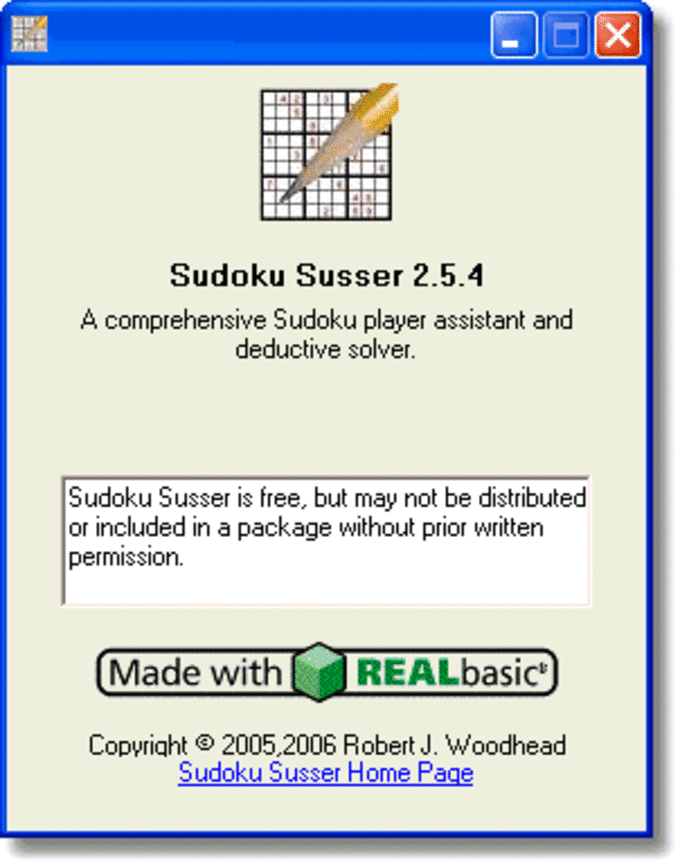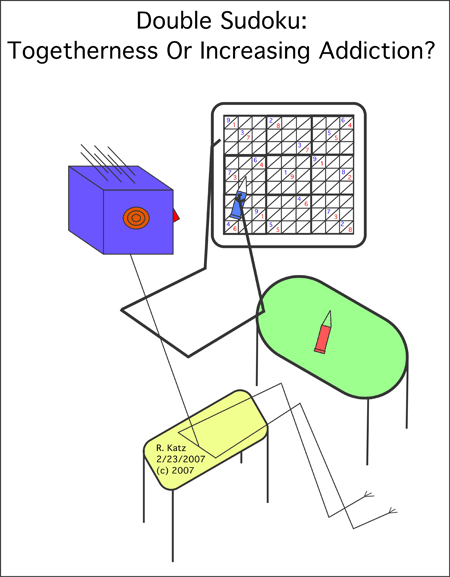

The majority of puzzles have 22 to 26 givens, with 2 to 4 in each 3x3 block, although easy puzzles can have 30 or more givens. Um, no idea.- Fangz 16:39, (UTC) Reply According to "It has been said that in a classic 81-square Sudoku grid, the fewest number of squares that can be filled in by the creator for the reader to have any chance of finishing the puzzle is 19." Jooler 12:39, (UTC) Reply I have seen Sudokus with 20 "givens" - it would be interesting to see a "valid" Sudoku with only 19 givens. The maximum possible is 77 = 9 * 9 - 4 - If you have any rectangle in which you have to fill the corners with two numbers, then you will not be able to distinguish between the two mirror images. On a standard 9X9 grid, what would be the minimum number of "givens" needed to define a unique solution? And what would be the maximum possible number of givens that would allow more than one solution? - OpenToppedBus 16:11, (UTC) Having spent much of the day staring (in vain) at today's Sudoku puzzle in The Guardian, I found myself pondering. ZM Zotmeister 18:16, (UTC) Reply Questions about Sudoku copied from the Wikipedia:Reference Desk Just checked Nikoli's own website, and they answer that question: symmetrical givens, and limited givens (under thirty). I live in the United States but possess books from both companies, importing Nikoli works from Japan, and I feel there's no comparison: those of Nikoli are far superior. Opinion: Nikoli puzzles give one the sense that they are matching wits with the composer Dell puzzles feel randomly thrown together and lack personality. JPF 10:22, (UTC) Reply Definitely not the former - the printed Observer article has a photo of the earliest Dell version (from 1979) and it's clearly divided into blocks of nine.- OpenToppedBus 11:39, (UTC) My guess would be the symmetrical givens and hand-construction. Perhaps ensuring that none of the givens can be deduced from other givens?- OpenToppedBus 09:16, (UTC) From these comments it is plausible that the two changes were (i) dividing the grid into blocks of nine and (ii) symmetrical placement of givens.

Not sure what the other would be, though.

Jooler 18:48, (UTC) Reply I would guess, based on the rest of this article, that one of the innovations was the symmetrical placement of givens. what were those two small improvements? If they came up with the idea of dividing the grid into blocks of nine, then that would incline me to give Nikoli the credit for the modern puzzle. 81.158.205.208 18:12, (UTC) Reply They say that Euler came up with the idea of latin square and that Dell published puzzles based on this and then they say that "Publisher Nikoli made two small improvements to the concept and renamed it Sudoku". Thought I'd mention an article in the (British) Observer newspaper which discusses the origins of Sudoku, including its origins in the US. Hv 01:32, 17 August 2005 (UTC) Reply Origins of Sudoku :) - ZM Zotmeister 16:18, (UTC) Reply For what it's worth, I've become familiar with the term "givens" in this sense from UK-born puzzles, though my puzzle experience is wider than most.

It may also be the case that the term is only common parlance in the United States, whereas the Sudoku craze is presently epicentered in the United Kingdom.Besides, this is an encyclopedia - this is where the terminology should be defined. Jooler 10:35, (UTC) Reply The term "given" (as a noun) is generic: it applies to many different kinds of puzzles, not just Sudoku. I'm not sure "givens" is widely used anyway Google gives only 10 hits for 'sudoku +givens'. A computer could easily throw together a valid solution grid and then discard numbers to create a puzzle I'm guessing Wayne Gould's program follows something more like the "Let's Make Sudoku!" site linked to by the article.Anyone know Wayne Gould? - ZM Zotmeister 17:50, (UTC) Reply Well when I wrote the above comment I hadn't read the term "givens" used in reference to numbers already placed in the grid, so it read as bewildering. What!? Jooler 10:12, (UTC) Reply I know "symmetrical givens" is defined in the article "humanistic algorithm" (for the non-computer-scientists out there) means basically a computer program written to do something in the exact same way a human being would. The Sudoku puzzles printed in most UK newspapers are apparently computer-generated but employ symmetrical givens, implying a more humanistic algorithm


 0 kommentar(er)
0 kommentar(er)
